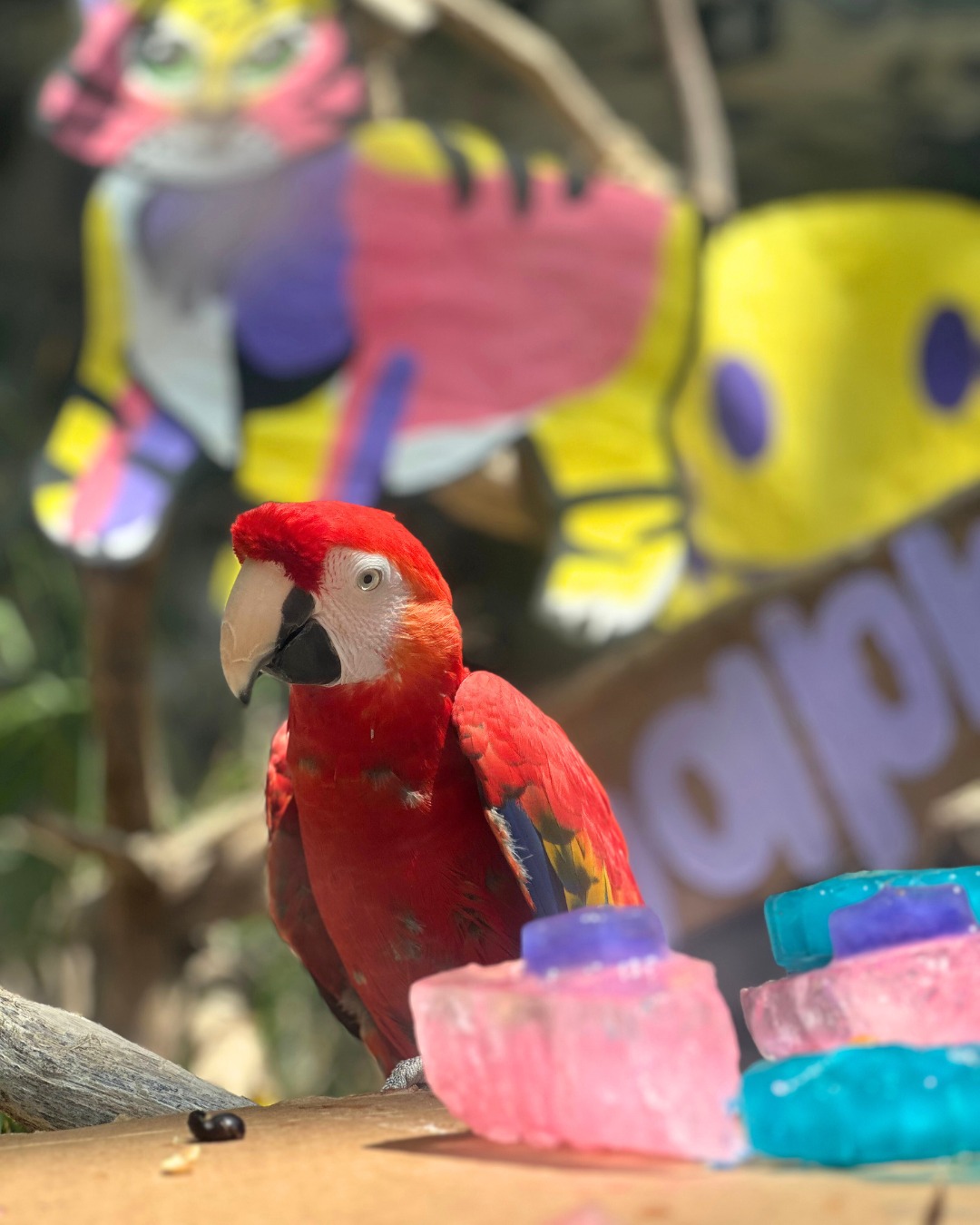- The significance of Maya’s colorful birthday celebration and its inspirations.
- The biology and conservation of macaws, focusing on Maya’s species.
- The role of zoos in wildlife education and conservation efforts.
- Innovative approaches in animal care and enrichment practices.
- The importance of community engagement in conservation projects.
Maya the Macaw’s birthday was an exuberant celebration that captured the vivid imagination reminiscent of a Lisa Frank coloring book. With a rainbow of colors and vibrant decorations, this event highlighted both the joyful occasion of Maya turning nine and underscored the zoo’s commitment to wildlife conservation and education. Such an event serves as a platform to engage the public while promoting the zoo’s initiatives in preserving wildlife and their habitats.
Macaws, like Maya, are fascinating creatures. They are renowned for their brilliant plumage, which serves as a crucial adaptation to their natural habitat in Central and South American rainforests. Their bright feathers help them blend into the diverse colors of the canopy, providing camouflage from predators. The particular species of Maya, the macaw, plays a significant role in its ecosystem, acting both as a seed disperser and a part of the intricate food chain.
The biology of macaws is equally captivating. These birds are known for their intelligence, social behavior, and long lifespans, often living up to 50 years or more in captivity. Their ability to mimic human speech is well-documented, though this trait is more pronounced in some species than others. Conservation efforts for macaws have become increasingly crucial due to habitat destruction and illegal trade, which have placed several species on the endangered list. Protecting these magnificent birds involves international cooperation and robust conservation strategies.
Zoos today are much more than places for public entertainment; they serve as vital hubs for conservation and education. In the case of Maya the Macaw, her birthday event was a reflection of the zoo’s commitment to highlighting these roles. Modern zoos focus on breeding programs for endangered species, research on animal behavior and welfare, and public education campaigns to raise awareness about conservation issues.
Animal care teams go above and beyond to provide environments that stimulate the natural instincts of their residents. For Maya, the special ice cake crafted for her birthday is an example of enrichment designed to promote mental and physical stimulation. Such activities are crucial for the well-being of birds in captivity, mimicking the challenges they would face in the wild.
Community engagement is another cornerstone of wildlife conservation. Events like Maya’s birthday are designed not only to celebrate but also to educate. They offer opportunities for visitors to learn about conservation efforts and inspire them to participate in sustainability initiatives. By connecting the public to wildlife in meaningful ways, zoos can foster a culture of conservation and stewardship in the wider community.
In summary, Maya’s birthday celebration was much more than a festive occasion; it was an illustration of how zoos integrate education, conservation, and animal welfare. It showcased the colorful world of macaws, the critical importance of maintaining biodiversity, and the innovative ways in which zoos contribute to these efforts. Through community engagement and educational initiatives, such events help build a collective effort towards global conservation goals.
*****
Source Description
Maya’s birthday was straight out of a Lisa Frank coloring book… colorful, vibrant, and bright hues! 🌈🦜 Maya’s animal care team surprised her with a very special ice cake. Happy 9th Hatch Day to our sweet girl, Maya the Macaw!


